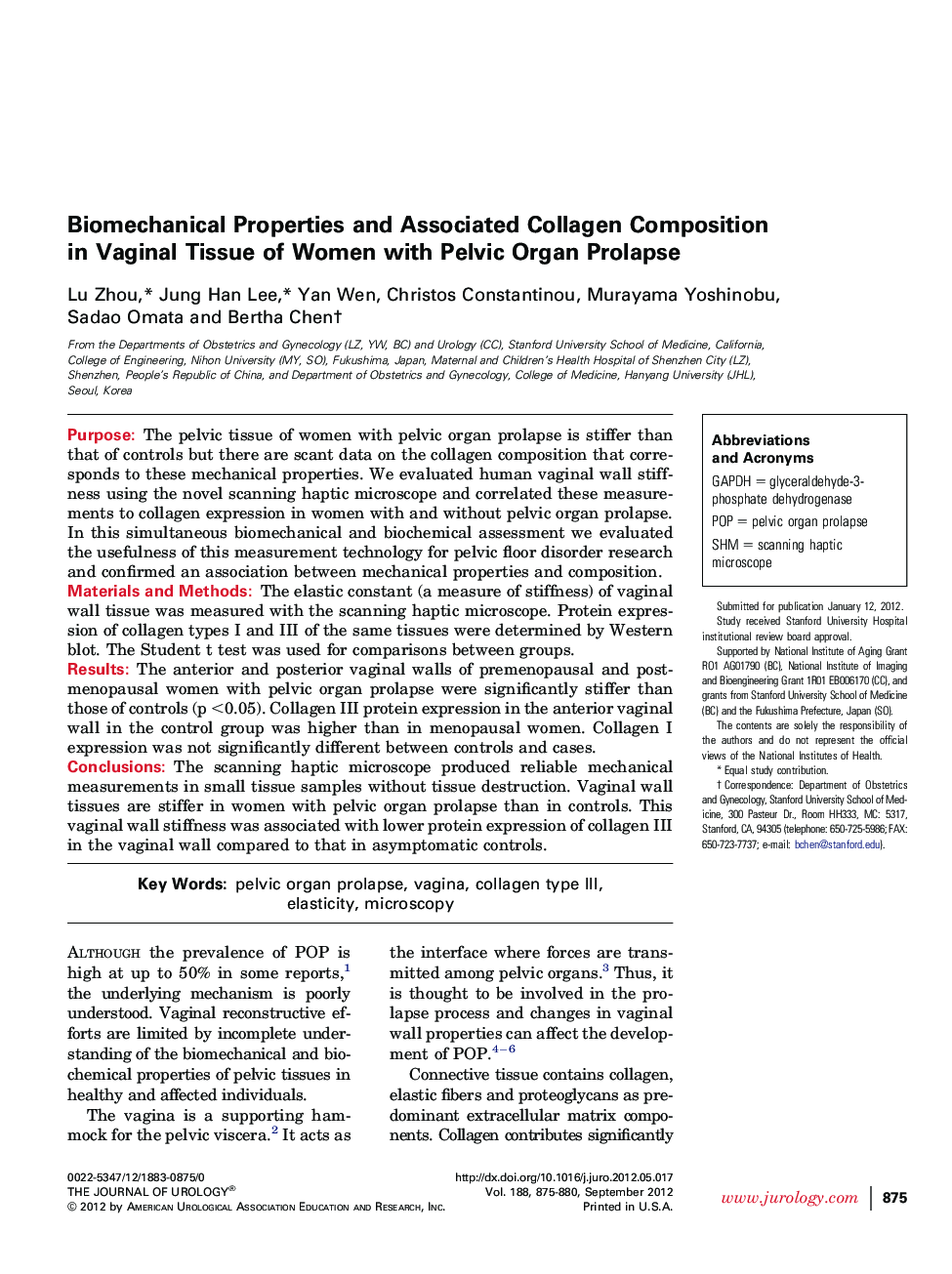| Article ID | Journal | Published Year | Pages | File Type |
|---|---|---|---|---|
| 3862258 | The Journal of Urology | 2012 | 6 Pages |
PurposeThe pelvic tissue of women with pelvic organ prolapse is stiffer than that of controls but there are scant data on the collagen composition that corresponds to these mechanical properties. We evaluated human vaginal wall stiffness using the novel scanning haptic microscope and correlated these measurements to collagen expression in women with and without pelvic organ prolapse. In this simultaneous biomechanical and biochemical assessment we evaluated the usefulness of this measurement technology for pelvic floor disorder research and confirmed an association between mechanical properties and composition.Materials and MethodsThe elastic constant (a measure of stiffness) of vaginal wall tissue was measured with the scanning haptic microscope. Protein expression of collagen types I and III of the same tissues were determined by Western blot. The Student t test was used for comparisons between groups.ResultsThe anterior and posterior vaginal walls of premenopausal and postmenopausal women with pelvic organ prolapse were significantly stiffer than those of controls (p <0.05). Collagen III protein expression in the anterior vaginal wall in the control group was higher than in menopausal women. Collagen I expression was not significantly different between controls and cases.ConclusionsThe scanning haptic microscope produced reliable mechanical measurements in small tissue samples without tissue destruction. Vaginal wall tissues are stiffer in women with pelvic organ prolapse than in controls. This vaginal wall stiffness was associated with lower protein expression of collagen III in the vaginal wall compared to that in asymptomatic controls.
